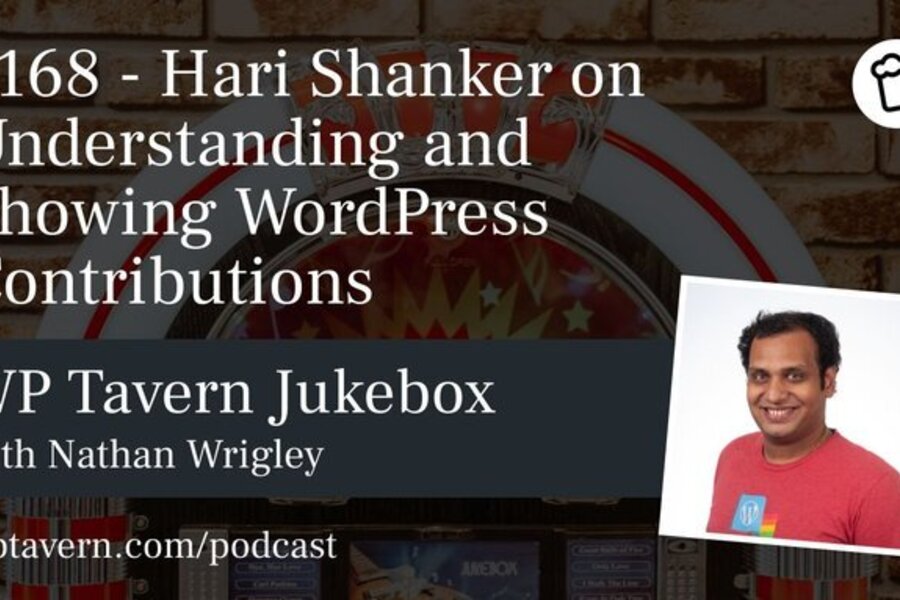In episode #168 of the WP Tavern Jukebox podcast, veteran WordPress contributor Hari Shanker shares deep insights into the changing dynamics of open-source contributions and unveils an ambitious new project — the WordPress Contribution Health Dashboards. This experimental initiative could reshape how the global WordPress community identifies, tracks, and values the work of its contributors.
Hari, who began contributing to WordPress in 2007, has worn many hats throughout his journey. From being a full-time contributor at Automattic to now volunteering as a community program manager, his focus has remained consistent: supporting the growth and sustainability of the WordPress project. Through programs like Five for the Future, contributor mentorship, and community events, Hari’s influence is felt across many layers of the ecosystem.
Speaking from his home in India, Hari describes the country’s vibrant and fast-growing WordPress landscape. With a surge in local meetups, student engagement, and company participation, India is becoming a major force in open-source development. The upcoming WordCamp Asia 2026, set to take place in Mumbai, marks a significant milestone in this momentum. Local organizations such as rtCamp, Multidots, and InstaWP are making notable contributions, and their involvement illustrates the strength and promise of WordPress in the region.
The heart of the podcast centers on the WordPress Contribution Health Dashboards, a new toolset being developed to address one of the platform’s most pressing needs: visibility into contributor activity. The WordPress project is famously decentralized, with contributors working across multiple platforms — Slack, GitHub, Trac, P2 blogs, and more. This fragmentation makes it difficult to understand the full scope of who is contributing, where they are contributing, and how those efforts align with the project’s evolving needs.
The dashboards aim to change that. By aggregating data across platforms, they seek to offer a clearer, more accessible picture of the community’s contributions. The goal is to create a central hub where contributors can track their own involvement, discover high-impact areas that need support, and feel more connected to the direction and progress of the overall project.
But building these dashboards is not without its challenges. Hari highlights a range of technical and organizational obstacles, such as integrating data from diverse platforms, dealing with incomplete or inaccessible records, and navigating privacy concerns. Not all contributions are easily measurable, especially non-code efforts like organizing events, mentoring, translating, or community outreach. These contributions, while vital, often go under-recognized in traditional reporting.
To overcome these issues, the project is turning to tools like GrimoireLab and Bitergia, which have been used successfully in other open-source ecosystems. These platforms can track contributions across code repositories, communication channels, and project management systems, offering flexible and powerful analytics capabilities. However, Hari stresses that the success of the project depends not just on the tools, but on the people, especially volunteers with experience in data visualization, system architecture, and user experience.
Beyond technical tracking, Hari emphasizes the cultural value of recognition and inclusion. Contributions should not be judged solely by code commits or plugin submissions. Every contributor, regardless of role or geography, deserves to see their impact reflected in the project. A robust dashboard system could foster a more welcoming and supportive environment for newcomers, helping them understand where their help is needed and how to make a meaningful difference.
The podcast also discusses how the dashboards align with broader community goals. For instance, the Five for the Future initiative encourages companies and individuals to pledge a portion of their time to contributing to WordPress. But without clear data on where help is needed, those pledges risk being misdirected or undervalued. Dashboards could solve this by highlighting under-supported teams or neglected issues, ensuring that time and talent are put to the best possible use.
Hari paints a picture of a future where WordPress contributions are guided by clarity, strategy, and data. A future where contributors — whether they’re in New York, Nairobi, or New Delhi — can see a visual map of the project’s needs, plug into meaningful work, and receive acknowledgment for their efforts. This kind of data-driven transparency not only boosts morale but also improves the overall efficiency and coordination of the community.
As the episode concludes, Hari calls on contributors from all backgrounds to get involved. Whether you’re a developer, designer, educator, or project manager, your skills can play a part in shaping the next phase of WordPress growth. He invites listeners to explore the project on Make WordPress Slack, check out tools like GrimoireLab, and participate in ongoing discussions around contributor recognition and sustainability.
In a world where open-source software powers much of the internet, ensuring the health and visibility of contributors is no longer optional — it’s essential. Hari’s work with the Contribution Health Dashboards represents a forward-thinking step toward that goal. By championing transparency, inclusivity, and data empowerment, he is helping the WordPress project honor its roots while preparing it for the future.

